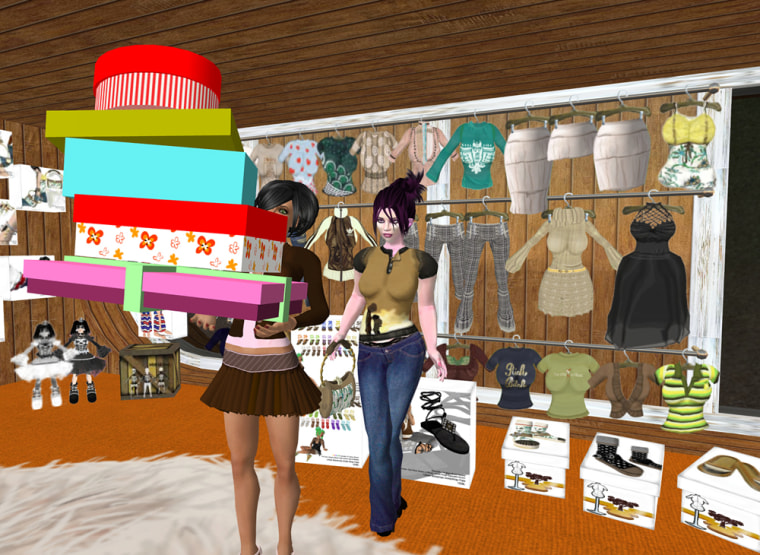IBM Corp. didn't throw a lavish casino party or set up an over-the-top booth to mark its return to the International Consumer Electronics Show for the first time in a decade. Rather, the company reserved its most ambitious consumer initiative for the virtual world.
On Monday, IBM announced plans to build virtual stores for Sears Holdings Corp. and Circuit City Stores Inc. in the popular online world Second Life. The partnerships could help IBM expand its consulting services to corporate clients interested in the growing number of people who belong to immersive online environments, also called the "3-D Internet."
Second Life is a subscription-based, 3-D fantasy world devoted to capitalism — a 21st century version of Monopoly that generates real money for successful players. More than 2.4 million people worldwide have Second Life characters, called avatars.
At one point Monday afternoon, 22,000 avatars were logged onto Second Life, socializing by instant messages or engaging in virtual pastimes such as flying, dancing, gambling or watching adult videos.
At the "Sears Virtual Home," avatars of IBM architects greeted guests with glasses of merlot and invitations to sit in recliners and watch flat-screen televisions in a fantasy home theater.
The idea is to help consumers see how Sears' refrigerators, televisions, counter tops, garage doors, storage cabinets and other products look in a 3-D environment. Visitors can swap cabinets with counter tops to determine which combination they like most, and they may follow links to purchase items from the Sears' main Web site.
Eventually, avatars will be able to type in precise room dimensions and come up with design ideas and even blueprints for kitchens, garages or home theaters.
In the Circuit City headquarters on Second Life, avatars could get information on products sold in real stores and configure couches and flat-screen televisions to see what might look best in their real-world living room. A "digital adviser" gave tips about moving the couch back or forward depending on the size of the monitor.
IBM's chief technologist, Irving Wladawsky-Berger, acknowledged that virtual-world business is in the experimental stage.
On Monday, hundreds of avatars were naked and hairless — a software glitch resulting from so many users trying to participate at once. In September, the San Francisco-based company that runs Second Life, Linden Lab, warned that a security breach may have exposed subscribers' data, including credit card numbers and passwords.
"We view these virtual worlds at a very early stage, both technically and culturally," said Wladawsky-Berger, IBM's chief technologist. "Commerce and collaboration are two key areas ripe for applying virtual worlds to real life, but we also see applications in education, health care and many other areas."
